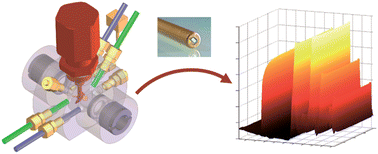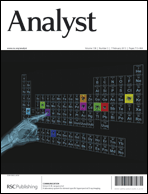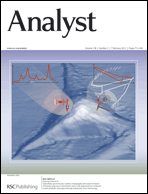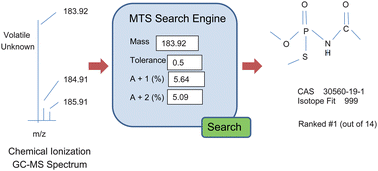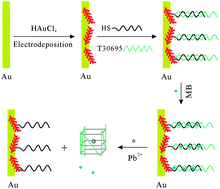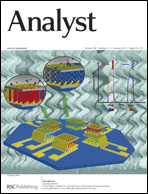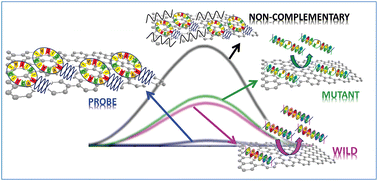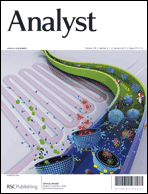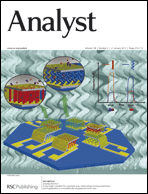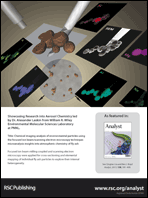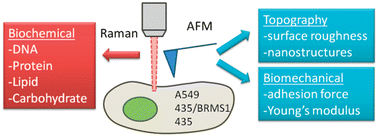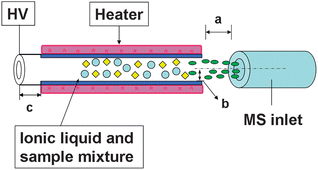 Here are some great HOT articles for you free to read until January 24th!
Here are some great HOT articles for you free to read until January 24th!
Topics include improved detection methodologies such as aptamer-based spectrofluorometry for cellular prion protein detection and new signal-amplified strategies to detect chair-like antiparallel G-quadruplex. In addition, an interesting study from Germany presents a new versatile reactor design developed for monitoring multiphase reactions. Take a look at the full articles below:
Comprehensive monitoring of a biphasic switchable solvent synthesis
Sonja Hardy , Irene M. de Wispelaere , Walter Leitner and Marcel A. Liauw
Analyst, 2013,138, 819-824
DOI: 10.1039/C2AN36044F
Aptamer-based spectrofluorometry for cellular prion protein using N,N′-bis[3,3′-(dimethylamino)propylamine]-3,4,9,10-perylenetetracarboxylic diimide
Lei Zhan , Li Jiao Liang , Shu Jun Zhen , Chun Mei Li and Cheng Zhi Huang
Analyst, 2013,138, 825-830
DOI: 10.1039/C2AN36322D
Enzyme-free colorimetric bioassay based on gold nanoparticle-catalyzed dye decolorization
Wei Li , Jie Li , Weibing Qiang , Jingjuan Xu and Danke Xu
Analyst, 2013,138, 760-766
DOI: 10.1039/C2AN36374G
A novel signal-amplified strategy based on assembly reactivation for highly specific and sensitive detection of chair-like antiparallel G-quadruplex
Wei Gai , Qianfan Yang , Junfeng Xiang , Wei Jiang , Qian Li , Hongxia Sun , Lijia Yu , Qian Shang , Aijiao Guan , Hong Zhang and Yalin Tang
Analyst, 2013,138, 798-804
DOI: 10.1039/C2AN36557J
Comparison of photo- and Cu(I)-catalyzed “click” chemistries for the formation of carbohydrate SPR interfaces
Nazek Maalouli , Alexandre Barras , Aloysius Siriwardena , Mohamed Bouazaoui , Rabah Boukherroub and Sabine Szunerits
Analyst, 2013,138, 805-812
DOI: 10.1039/C2AN36272D
A highly selective fluorescent probe for BO3− based on acetate derivatives of coumarin in aqueous solution and thimerosal
Fangjun Huo , Long Wang , Yutao Yang , Yueyin Chu , Caixia Yin , Jianbin Chao , Yongbin Zhang , Xuxiu Yan , Anmin Zheng , Shuo Jin and Peng Zhi
Analyst, 2013,138, 813-818
DOI: 10.1039/C2AN36492A


